It looks like you're using an Ad Blocker.
Please white-list or disable AboveTopSecret.com in your ad-blocking tool.
Thank you.
Some features of ATS will be disabled while you continue to use an ad-blocker.
15
share:
Silas Soule (7/27/1838-4/23/1865), The Soule of a Man
Silas Soule was granted only 26 years on this planet, but he lived them to the fullest. Born 180 years (and one day) ago, killed in the streets of Denver for taking a stand against powerful enemies, his short life was marked by tremendous feats of bravery and an ardent desire to fight the evils of his day. Let’s take a moment to honor the brilliant flash of life which briefly visited this planet and left a lasting (even if little known) impact, the life of Silas Soule.
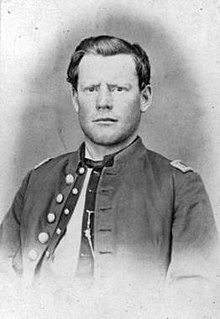
Captain Silas Soule, c. 1865
The Soule Family Legacy
Silas Soule was born in Maine to abolitionist parents. His formative years were spent in Maine and Massachusetts, until, perhaps prompted by a lively family reading of Uncle Tom’s Cabin, the family decided to move to the still-forming state of Kansas and working towards establishing it as a slave-free state. The Soule family moved to Coal Creek, Kansas in 1854, and although the harsh living conditions and illness soon convinced the ladies to return to the Northeast, Silas, his father, and his brother remained and established a stop on the Underground Railroad. The Soule family were among the founders of Lawrence, KS., and young Silas is also credited with being part of a small group of young men who raised money and established the oldest continually operated library in Kansas--the Coal Creek Library.
Silas was 17 when he began actively participating in the bold rescue of humans stuck in bondage. He joined the anti-slavery militant group “The Jayhawkers.” He was considered quite the skilled jailbreaker, and, along with a band of young men later coined “The Immortal Ten,” rescued Dr. John Doy who was incarcerated after being caught trying to guide a group of slaves to their freedom.
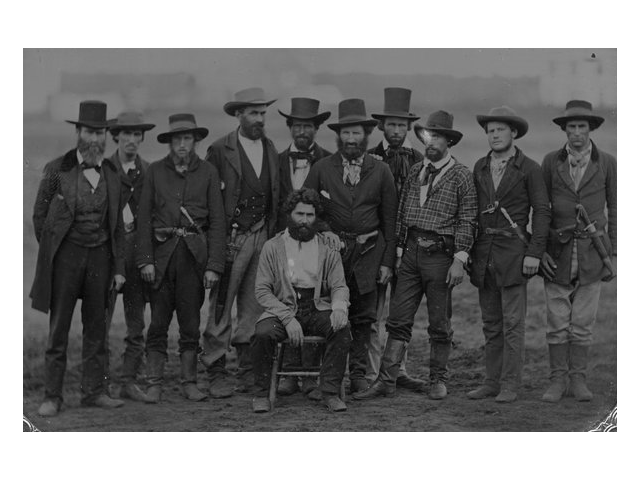
Soule, second from right, with “The Immortal Ten.”
After family friend John Brown refused the Soules’ request to break him out of jail (he chose to martyr himself for his cause), Soule travelled to Virginia in an attempt to free two of Brown’s accomplices from certain death. He feigned intoxication to gain access to the two men, who refused to leave, preferring to join John Brown as a martyr to the cause. Silas later expressed his dismay at the men not wanting to live to fight some more.
Soule met Walt Whitman in Boston around this time, and the two men struck up a friendship and a correspondence. You can read one of Soule’s letters to Whitman later in this piece.
Striking Out for Adventure
While Silas was away on his rescue attempt, his father heard word that he was a marked man. Silas was convinced not to return to Kansas. He decided to join his brother in Colorado for the great gold rush. Silas saw no great success as a miner, tried his hand at blacksmithing, and then when the war broke out in 1861 chose to sign up as a member of the Union Army in the First Colorado Volunteer Infantry.
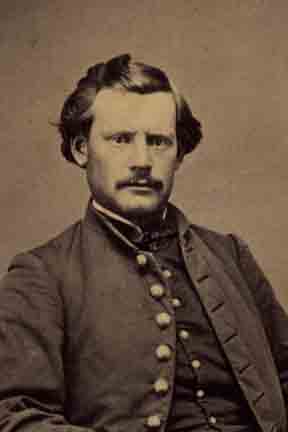
Through great success at the Battle of Glorieta Pass (known by some historians as “The Gettysburg of the West”), Silas earned a name as a brave and skilled tactical soldier. He was promoted to Captain as a result of this pivotal battle, while the entire Colorado Infantry was bestowed with the title Cavalry, and his commanding officer Maj. Chivington was promoted to General. During this time, Soule wrote to his friend Walt Whitman pertaining to some of his adventures. Here is an excerpt, but please follow the link to read the letter in full:
Link: whitmanarchive.org...
An Envoy for Peace
Silas Soule joined his friend Maj. Wynkoop (founder of Denver) and his commanding officer General Chivington in numerous peace talks with the Arapaho and Cheyenne in the early 1860s.
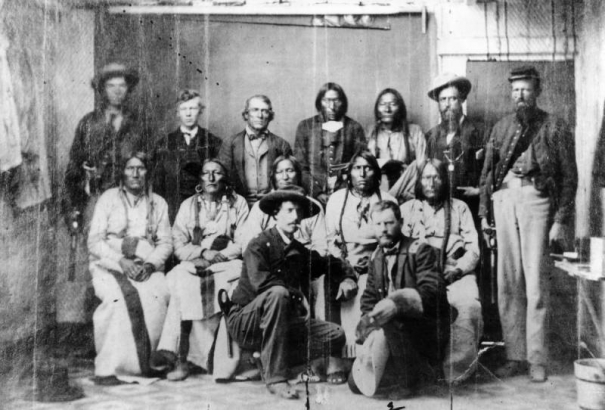
Soule, bottom right, pictured with Wynkoop, bottom left, and an envoy of peaceful Arapaho and Cheyenne. (Also in the picture are General Chivington, Black Kettle, and John Smith).
As a result of these talks, Territorial Governor Evans granted the Cheyenne and Arapaho some acres Southwest of Denver where they could reside in peace, under the protection of the Colorado regiment. Among the notable figures of Cheyenne warriors is Black Kettle, pictured below, who continued to advocate for peace despite horrific breaches of treaties until he was killed in a massacre in Oklahoma, several years after escaping, with his wounded wife, the massacre I am about to describe which was perpetrated in the early hours of a harsh prairie winter.
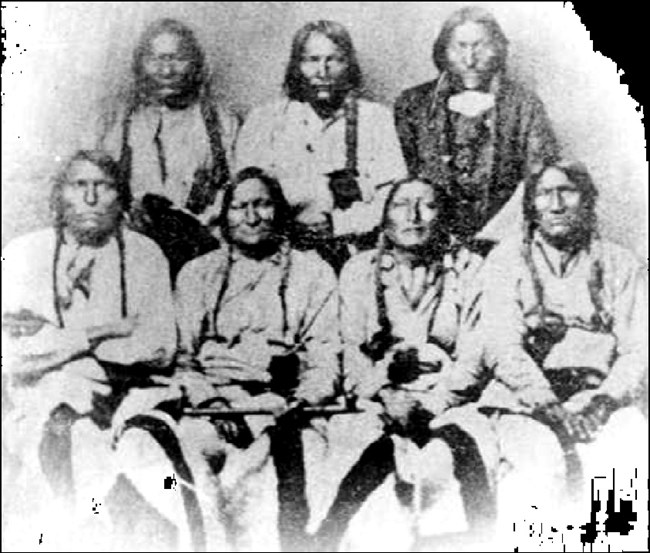
Black Kettle, second from left bottom row, and his envoy for peace.
Contentious Times
There is no denying the contentious and fearful tension which pervaded many of the territorial states. The mutilated remains of a family of settlers, widely believed to have been murdered by the hands of a stray band of warring Arapaho, were put on display in Denver in June 1864 and sparked fear and indignation and prompted Governor Evans to declare war on the Indian nations.
The peace talks I mentioned above were a result of this declaration. Black Kettle and a number of men took to Denver for a number of talks during which they announced their dedication to peace, and their intention to live with their people in harmony with their new neighbors.
While Governor Evans originally agreed to grant the Cheyenne and Arapaho people some land in Southwest Denver where they could live in amnesty, the resources needed to maintain the mostly elderly, young, and female tribe members proved to be too much of a strain. Most historians agree that Chivington had Evans’ full approval when he chose to attack the band in the early hours before dawn on November 29, 1864, less than three months after attending the meeting with Black Kettle. The “battle” lasted 6-8 hours and ended in an estimated 150 dead, brutally massacred and butchered majority women and children. During the attack the hungover and sleepless “Bloodless Third” (as they had been dubbed) took trophies of body parts, accidently killed a few of their own in their frenzied approach, and took extra care to leave none of the wounded alive. The troops then rode into Denver with their trophies, Chivington claiming to have killed 750 threatening braves.
But for Silas Soule, Chivington and Evans might have had important political careers ahead.
(Continued below)
Silas Soule was granted only 26 years on this planet, but he lived them to the fullest. Born 180 years (and one day) ago, killed in the streets of Denver for taking a stand against powerful enemies, his short life was marked by tremendous feats of bravery and an ardent desire to fight the evils of his day. Let’s take a moment to honor the brilliant flash of life which briefly visited this planet and left a lasting (even if little known) impact, the life of Silas Soule.

Captain Silas Soule, c. 1865
The Soule Family Legacy
Silas Soule was born in Maine to abolitionist parents. His formative years were spent in Maine and Massachusetts, until, perhaps prompted by a lively family reading of Uncle Tom’s Cabin, the family decided to move to the still-forming state of Kansas and working towards establishing it as a slave-free state. The Soule family moved to Coal Creek, Kansas in 1854, and although the harsh living conditions and illness soon convinced the ladies to return to the Northeast, Silas, his father, and his brother remained and established a stop on the Underground Railroad. The Soule family were among the founders of Lawrence, KS., and young Silas is also credited with being part of a small group of young men who raised money and established the oldest continually operated library in Kansas--the Coal Creek Library.
Silas was 17 when he began actively participating in the bold rescue of humans stuck in bondage. He joined the anti-slavery militant group “The Jayhawkers.” He was considered quite the skilled jailbreaker, and, along with a band of young men later coined “The Immortal Ten,” rescued Dr. John Doy who was incarcerated after being caught trying to guide a group of slaves to their freedom.

Soule, second from right, with “The Immortal Ten.”
After family friend John Brown refused the Soules’ request to break him out of jail (he chose to martyr himself for his cause), Soule travelled to Virginia in an attempt to free two of Brown’s accomplices from certain death. He feigned intoxication to gain access to the two men, who refused to leave, preferring to join John Brown as a martyr to the cause. Silas later expressed his dismay at the men not wanting to live to fight some more.
Soule met Walt Whitman in Boston around this time, and the two men struck up a friendship and a correspondence. You can read one of Soule’s letters to Whitman later in this piece.
Striking Out for Adventure
While Silas was away on his rescue attempt, his father heard word that he was a marked man. Silas was convinced not to return to Kansas. He decided to join his brother in Colorado for the great gold rush. Silas saw no great success as a miner, tried his hand at blacksmithing, and then when the war broke out in 1861 chose to sign up as a member of the Union Army in the First Colorado Volunteer Infantry.

Through great success at the Battle of Glorieta Pass (known by some historians as “The Gettysburg of the West”), Silas earned a name as a brave and skilled tactical soldier. He was promoted to Captain as a result of this pivotal battle, while the entire Colorado Infantry was bestowed with the title Cavalry, and his commanding officer Maj. Chivington was promoted to General. During this time, Soule wrote to his friend Walt Whitman pertaining to some of his adventures. Here is an excerpt, but please follow the link to read the letter in full:
Well here I am camped on a sand bank on the Rio Grande River the weather is hot and we have seen little of the good things of America in the shape of Grub and Clothing but we have a Regament composed of natures Noblemen. we left Denver poorly clothed and equipped in the month of February, marched to Fort Union a distance of four hundred miles in fifteen days, two days we marched forty miles a day and then hearing that the Texans were marching on Fort Union we marched over seventy miles in twenty four hours. I believe that was the best marching made by any Reg in the Service. We being short of provision and destitute of Clothing our men stood it bravely and never murmured.
Link: whitmanarchive.org...
An Envoy for Peace
Silas Soule joined his friend Maj. Wynkoop (founder of Denver) and his commanding officer General Chivington in numerous peace talks with the Arapaho and Cheyenne in the early 1860s.

Soule, bottom right, pictured with Wynkoop, bottom left, and an envoy of peaceful Arapaho and Cheyenne. (Also in the picture are General Chivington, Black Kettle, and John Smith).
As a result of these talks, Territorial Governor Evans granted the Cheyenne and Arapaho some acres Southwest of Denver where they could reside in peace, under the protection of the Colorado regiment. Among the notable figures of Cheyenne warriors is Black Kettle, pictured below, who continued to advocate for peace despite horrific breaches of treaties until he was killed in a massacre in Oklahoma, several years after escaping, with his wounded wife, the massacre I am about to describe which was perpetrated in the early hours of a harsh prairie winter.

Black Kettle, second from left bottom row, and his envoy for peace.
Contentious Times
There is no denying the contentious and fearful tension which pervaded many of the territorial states. The mutilated remains of a family of settlers, widely believed to have been murdered by the hands of a stray band of warring Arapaho, were put on display in Denver in June 1864 and sparked fear and indignation and prompted Governor Evans to declare war on the Indian nations.
The peace talks I mentioned above were a result of this declaration. Black Kettle and a number of men took to Denver for a number of talks during which they announced their dedication to peace, and their intention to live with their people in harmony with their new neighbors.
While Governor Evans originally agreed to grant the Cheyenne and Arapaho people some land in Southwest Denver where they could live in amnesty, the resources needed to maintain the mostly elderly, young, and female tribe members proved to be too much of a strain. Most historians agree that Chivington had Evans’ full approval when he chose to attack the band in the early hours before dawn on November 29, 1864, less than three months after attending the meeting with Black Kettle. The “battle” lasted 6-8 hours and ended in an estimated 150 dead, brutally massacred and butchered majority women and children. During the attack the hungover and sleepless “Bloodless Third” (as they had been dubbed) took trophies of body parts, accidently killed a few of their own in their frenzied approach, and took extra care to leave none of the wounded alive. The troops then rode into Denver with their trophies, Chivington claiming to have killed 750 threatening braves.
But for Silas Soule, Chivington and Evans might have had important political careers ahead.
(Continued below)
edit on 28-7-2018 by zosimov because: (no reason given)
edit on 28-7-2018 by zosimov because: (no reason
given)
edit on 28-7-2018 by zosimov because: details, lol
Throughout the massacre, Soule refused to fire a shot and kept his men at bay.
Here is a link to the letter which Silas Soule wrote to his friend Edward Wynkoop describing the massacre from his perspective.
(An excerpt below)
The letter, along with Soule’s testimony and the testimony of other witnesses resulted in the downfall and disgrace of Chivington and the resignation of Governor Evans.
Silas Soule accepted a job overseeing military police in Denver once the trial was over. He married Hersa Coberly on April 1, 1865, April Fool’s Day. Three weeks later he responded to shots fired on the streets of downtown Denver and by most accounts walked right into a trap, and though he was able to wound his assailant, he fell dead on the street. Today an inconspicuous plaque marks the place where a hero fell. Wynkoop is the name of a street and brewery downtown. Evans Blvd encompasses a stretch just south of the city, passes by the university which Evans and Chivington established a few weeks before the massacre (Denver University), and Chivington is the name of a dusty forgotten and prairie encroached town many miles south of Denver. But the spirit of the history remains in the Soule of Denver.
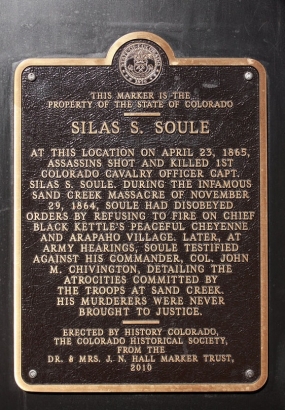
Thank you for reading! I hope you're having a great weekend
Sources:
history.denverlibrary.org...
www.kclonewolf.com...
history.denverlibrary.org...
en.wikipedia.org...
www.silas-soule.com...
Here is a link to the letter which Silas Soule wrote to his friend Edward Wynkoop describing the massacre from his perspective.
(An excerpt below)
[www.kclonewolf.com...
As soon as I knew of their movement I was indignant as you would have been were you here and went to Cannon's room, where a number of officers of the 1st and 3rd were congregated and told them that any man who would take part in the murders, knowing the circumstances as we did, was a low lived cowardly son of a bitch. Capt. Y. J. Johnson and Lieut. Harding went to camp and reported to Chiv, Downing and the whole outfit what I had said, and you can bet hell was to pay in camp.
Chiv and all hands swore they would hang me before they moved camp, but I stuck it out, and all the
officers at the Post, except Anthony backed me. I was then ordered with my whole company to Major A- with 20 days rations. I told him I would not take part in their intended murder, but if they were going after the Sioux, Kiowa’s or any fighting Indians, I would go as far as any of them. They said that was what they were going for, and I joined them. We arrived at Black Kettles and Left Hand's Camp at daylight. Lieut. Wilson with Co.s "C", "E" & "G" were ordered to in advance to cut off their herd.
He made a circle to the rear and formed a line 200 yds from the village, and opened fire.
The letter, along with Soule’s testimony and the testimony of other witnesses resulted in the downfall and disgrace of Chivington and the resignation of Governor Evans.
Silas Soule accepted a job overseeing military police in Denver once the trial was over. He married Hersa Coberly on April 1, 1865, April Fool’s Day. Three weeks later he responded to shots fired on the streets of downtown Denver and by most accounts walked right into a trap, and though he was able to wound his assailant, he fell dead on the street. Today an inconspicuous plaque marks the place where a hero fell. Wynkoop is the name of a street and brewery downtown. Evans Blvd encompasses a stretch just south of the city, passes by the university which Evans and Chivington established a few weeks before the massacre (Denver University), and Chivington is the name of a dusty forgotten and prairie encroached town many miles south of Denver. But the spirit of the history remains in the Soule of Denver.

Thank you for reading! I hope you're having a great weekend
Sources:
history.denverlibrary.org...
www.kclonewolf.com...
history.denverlibrary.org...
en.wikipedia.org...
www.silas-soule.com...
edit on 28-7-2018 by zosimov because: (no reason given)
edit on 28-7-2018 by zosimov because: (no reason given)
Respect, if only more people like this guy were alive in America, as well as other countries, who commit atrocities hidden under the guise of what's
supposed to be a democratic nation, the world could be a much better place
a reply to: Zcustosmorum
I completely agree that this guy deserves respect!
I also think that, in tumoltuous times (like today) there are always people who have the courage and resolve to do what is right.
Thanks for reading-- enjoy your weekend!
I completely agree that this guy deserves respect!
I also think that, in tumoltuous times (like today) there are always people who have the courage and resolve to do what is right.
Thanks for reading-- enjoy your weekend!
edit on 28-7-2018 by zosimov because: (no reason given)
I visited the cemetery where Captain Soule was laid to rest yesterday, and it was a beautiful experience. The cemetery was so goth- haphazard stones,
markers, hundreds of crows and blackbirds, dead and gnarled trees and bushes.
I found Silas's grave right away--the only one in the area which still gets paid respect. Seeing all the beautiful stones and American flags made me cry. The Cheyenne and Arapahoe still pay respects every year.
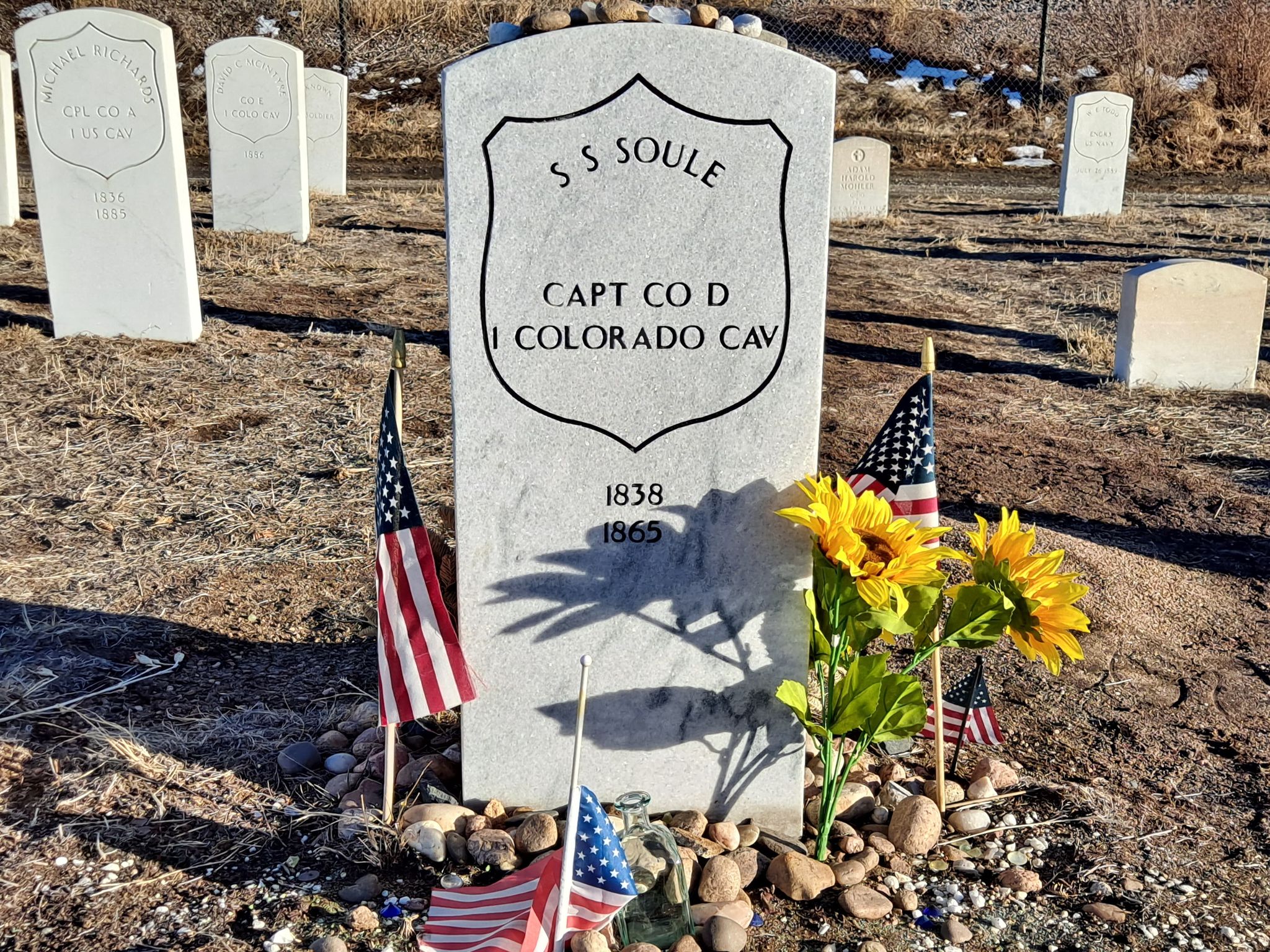
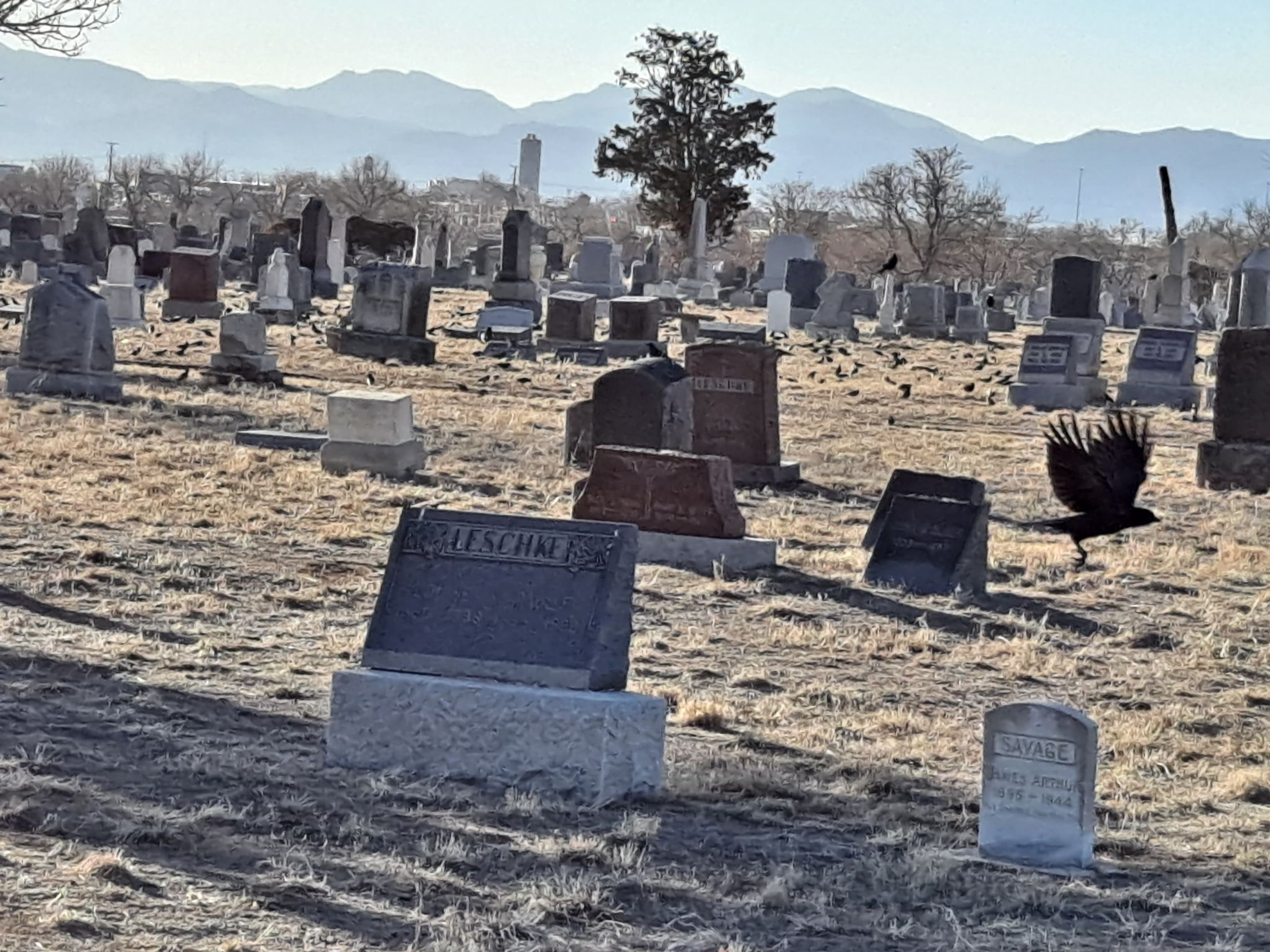
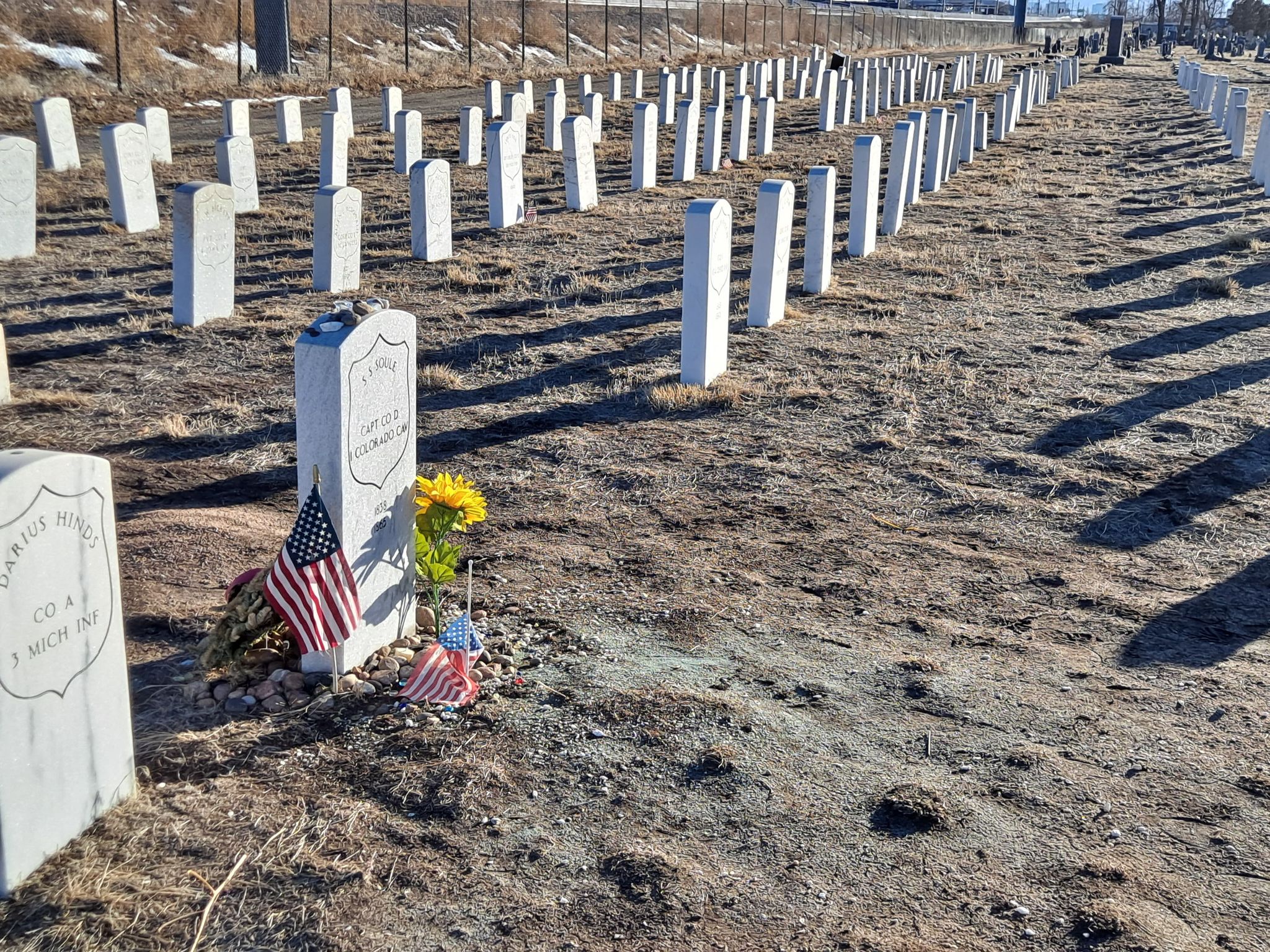
I found Silas's grave right away--the only one in the area which still gets paid respect. Seeing all the beautiful stones and American flags made me cry. The Cheyenne and Arapahoe still pay respects every year.



originally posted by: AugustusMasonicus
a reply to: zosimov
Excellent thread, next time I'm in town I'd like to visit that cemetery.
Let's go
Very interesting cemetery and atmosphere.
new topics
-
The trial on kids was stopped
Medical Issues & Conspiracies: 1 hours ago -
Orbs Appear And Form Triangle On Live Cam.
Aliens and UFOs: 3 hours ago -
Biden Has New Bizarre Injuries to His Face
Politicians & People: 5 hours ago -
Something is not adding up in regards to the H-1B commotion
General Conspiracies: 5 hours ago -
Elon Musk Calls for Tommy Robinson to be Freed - and Takes a Dig at Starmer
Politicians & People: 6 hours ago -
Biden to award Presidential Citizens Medal to Liz Cheney and Bennie Thompson
US Political Madness: 6 hours ago
top topics
-
Biden Has New Bizarre Injuries to His Face
Politicians & People: 5 hours ago, 10 flags -
Biden to award Presidential Citizens Medal to Liz Cheney and Bennie Thompson
US Political Madness: 6 hours ago, 9 flags -
Just learned a really helpful trick for internet searches
Computer Help: 12 hours ago, 7 flags -
Not off to a good start
General Chit Chat: 14 hours ago, 6 flags -
Elon Musk Calls for Tommy Robinson to be Freed - and Takes a Dig at Starmer
Politicians & People: 6 hours ago, 5 flags -
Something is not adding up in regards to the H-1B commotion
General Conspiracies: 5 hours ago, 5 flags -
Orbs Appear And Form Triangle On Live Cam.
Aliens and UFOs: 3 hours ago, 5 flags -
The trial on kids was stopped
Medical Issues & Conspiracies: 1 hours ago, 5 flags
active topics
-
Tesla Cybertruck Explodes in Front of Trump Hotel in Las Vegas
Mainstream News • 116 • : Flyingclaydisk -
Ukraine halts transit of Russian gas to Europe after a prewar deal expired
Political Conspiracies • 112 • : Imhere -
Orbs Appear And Form Triangle On Live Cam.
Aliens and UFOs • 5 • : Flyingclaydisk -
Vehicle Strikes people in New Orleans
Mainstream News • 279 • : Flyingclaydisk -
How we've changed in 100 years
Ancient & Lost Civilizations • 35 • : Flyingclaydisk -
The trial on kids was stopped
Medical Issues & Conspiracies • 1 • : marg6043 -
Biden to award Presidential Citizens Medal to Liz Cheney and Bennie Thompson
US Political Madness • 13 • : xuenchen -
-@TH3WH17ERABB17- -Q- ---TIME TO SHOW THE WORLD--- -Part- --44--
Dissecting Disinformation • 3895 • : IndieA -
Strange fog all over the northern hemisphere
General Conspiracies • 43 • : annonentity -
The Acronym Game .. Pt.4
General Chit Chat • 1033 • : tinkerbell99
15
